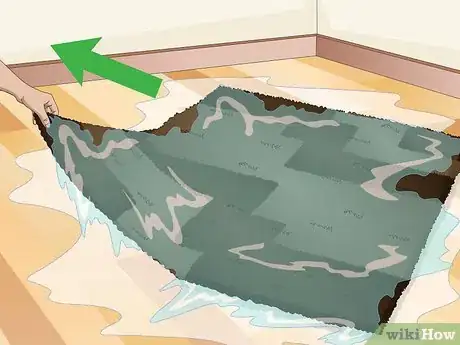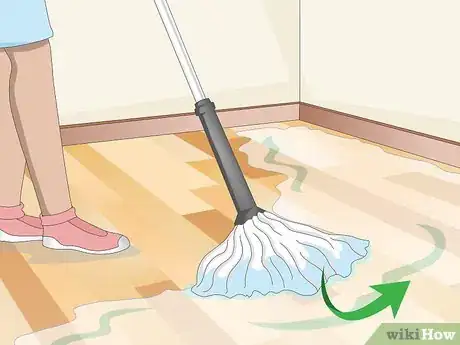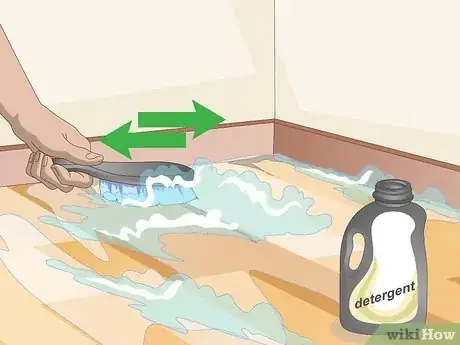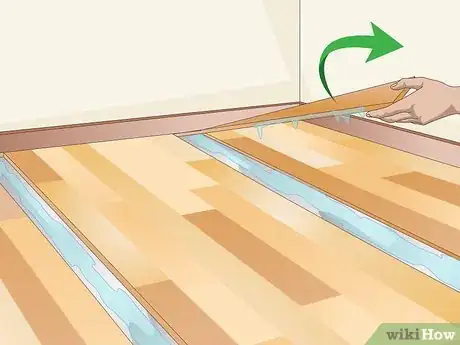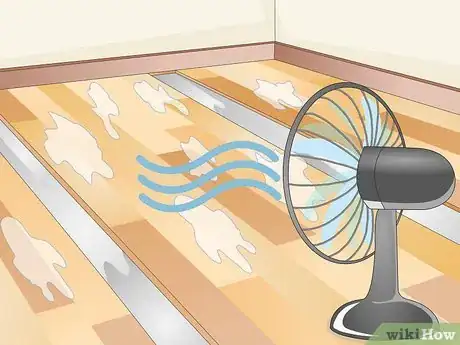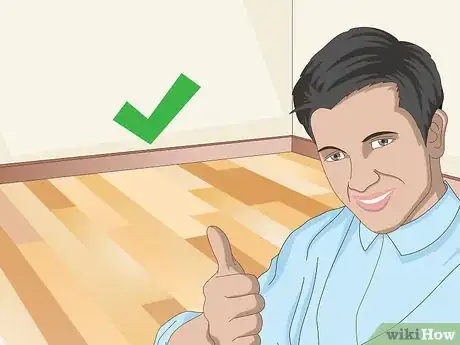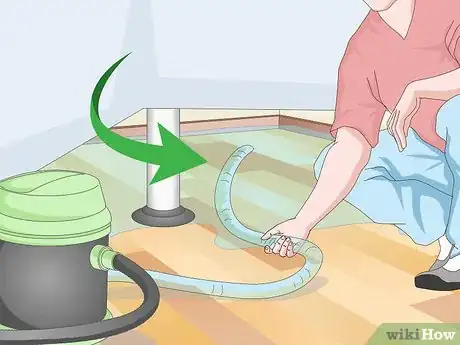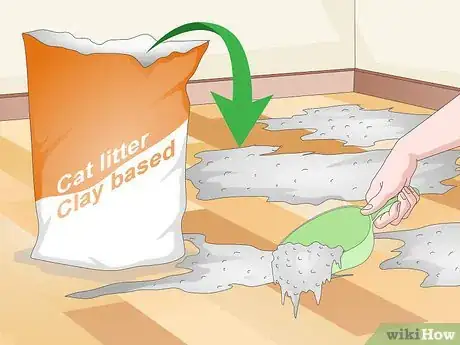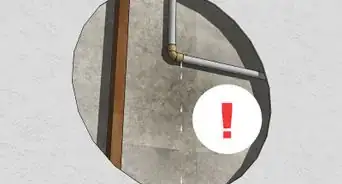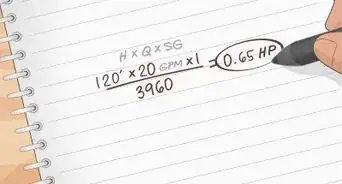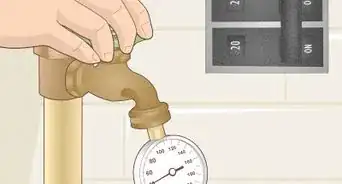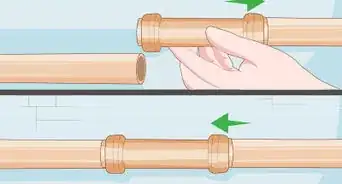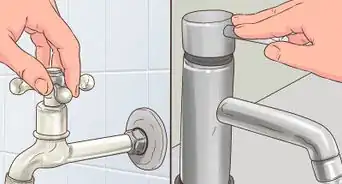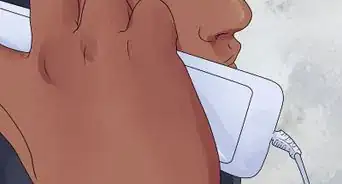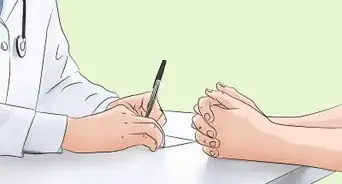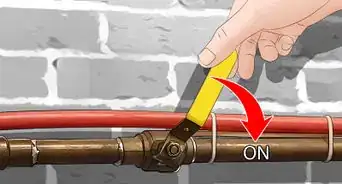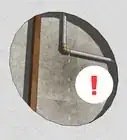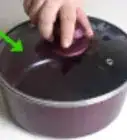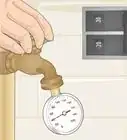This article was co-authored by wikiHow staff writer, Amy Bobinger. Amy Bobinger has been a writer and editor at wikiHow since 2017. She especially enjoys writing articles that help people overcome interpersonal hurdles but frequently covers a variety of subjects, including health and wellness, spirituality, gardening, and more. Amy graduated with a B.A. in English Lit from Mississippi College in 2011 and now lives in her hometown with her husband and two young sons.
This article has been viewed 138,177 times.
Learn more...
Wood floors can add character and style to your home, but water damage leave dark stains and can cause the wood to buckle. Luckily, if you can dry your wood floors, they can often be saved. You can use a combination of surface drying and air circulation to help remove moisture from the wood.
Steps
Drying Your Floors
-
1Remove all floor coverings. The area underneath your wood floor won’t dry while the wood is still wet. If your wood flooring is covered by wet rugs, mats, or carpeting, you’ll need to remove them immediately. If your carpets and rugs have been soaked and they are not immediately cleaned, they will usually need to be discarded due to mildew concerns.[1]
- A professional carpet cleaning company may be able to help save your carpet and treat it for mold.
-
2Dry visible water immediately after floors get wet. You won’t be able to dry water that has seeped into and underneath the floors, but you should immediately start drying the visible water on your floors. Mopping and toweling may be sufficient, but if flooding is severe, you may need to use a water pump.[2]
- Many hardware stores will allow you to rent equipment, such as pumps, that is too expensive to buy for a single use. If you choose to rent a pump, you can set it up in standing water and run a hose to another area, like outside, where the water can drain.
Advertisement -
3Scrub woodwork with a brush and detergent before floors are dry. If your house has flooded, there will likely be mud and silt trapped in the crevices and corners of your floor. Before the floors totally dry, take a non-abrasive but stiff brush, plenty of water, and a non-sudsing detergent, and thoroughly clean your floors.
- Cleaning while the floors are still wet will keep you from having to re-wet the floors after they’re dried.
-
4Remove a few boards to let the others expand and dry the subfloor. When wood floorboards get wet, they swell. If you remove a few floorboards (one every 5–10 feet (1.5–3.0 m) should be fine) will allow your floorboards to expand without buckling or cracking. This will also help the subfloor to dry faster.[3]
-
5Use fans to move the air around in your home. One of the fastest ways to help your wood floors dry out is to use large fans to circulate the air in your home. You can use regular box fans or you can purchase or rent large commercial-strength fans for faster drying.[4]
-
6Measure the moisture content of your wood floors. Be sure your wood floors are totally dry before you refinish or recover them. You can call a professional to measure the moisture remaining in your floors, or you can buy a moisture meter to measure it yourself. The moisture content should be within 5% of the readings of a section of wood flooring that wasn’t affected by flooding.
- You can purchase moisture meters at most hardware stores. They can range anywhere from $40-$200 depending on the brand and the features you choose, but for the most accurate readings, make sure you get one with pins that can be inserted into the wood.
-
7Have patience. Your wood floors and the area beneath them may take weeks or even months to fully dry. However, it’s worth the wait, as some floors will return to their original shape once they’re dried. They may need a surface sanding and re-nailing, but that’s much less trouble than replacing your floor.
- Interlocking wood floors have a higher chance of being permanently deformed due to water damage.
Lowering the Humidity in the House
-
1Open the windows and doors if the humidity is lower outside. If the air outside of your home is drier than the air inside, open all as many windows and doors as you can to help the air circulate. You should be able to feel whether the air is drier just by stepping outside, but if you’re not sure, you can purchase a humidity gauge from a hardware store.[5]
- If it’s sunny outside, it’s probably less humid outside than it is in the home. However, you’ll likely need to shut the windows and doors at night, when humidity outside increases.
-
2Open closets and cabinets and remove sliding drawers. Help your home dry faster by opening up damp closets and cabinets. This will allow the air to circulate more freely and will help lower the overall humidity in the home.[6]
- Sometimes drawers will swell and will be difficult to remove. If this happens, don’t try to force them — just open the cabinet beneath the drawer.
-
3Pump out the crawl space if you have one and it flooded. You need air to circulate through your crawl space in order to dry underneath your wood floors. If your crawl space is flooded, use pumps to remove all of the water. You may also want to place a fan in the crawlspace to circulate the air.[7]
-
4Avoid using the central air conditioning if your ducts were under water. If your ducts flooded, they’ll be full of dirt and silt which may contain contaminants which are dangerous if you breathe them in. Clean the ducts yourself or hire a professional for a duct cleaning before you turn on your central air unit again.[8]
-
5Run dehumidifiers if the water has seeped into the wood. You can use dehumidifiers and window air conditioners to reduce the humidity in the air, especially in closed-in areas. You can use a personal dehumidifier, but for severe flooding, you might have better results by renting commercial dehumidifiers, which remove 3-4 times more water than home models.[9]
- For best results, close nearby windows and doors when you’re using a dehumidifier.
-
6Use desiccants to remove moisture from closed-in areas. Desiccants are materials which are used to absorb moisture. They’re especially useful when you place them in closets or other areas where air doesn’t circulate, and they can be purchased at hardware, grocery, or drug stores.[10]
- Examples of desiccants include clay-based cat litter, calcium chloride pellets, and chemical dehumidifier packs used to dry boats.
References
- ↑ http://www.achd.net/pr/pubs/pdf/dryout.pdf
- ↑ http://www.achd.net/pr/pubs/pdf/dryout.pdf
- ↑ https://www.washingtonpost.com/graphics/2017/national/flooded-homes/?utm_term=.dab56d2743c2
- ↑ http://www.nytimes.com/2006/07/09/realestate/09home.html
- ↑ https://www.nd.gov/des/uploads/resources/316/flood-damaged-walls-ceilings-and-floors.pdf
- ↑ http://www.achd.net/pr/pubs/pdf/dryout.pdf
- ↑ http://www.achd.net/pr/pubs/pdf/dryout.pdf
- ↑ http://www.achd.net/pr/pubs/pdf/dryout.pdf
- ↑ https://www.nd.gov/des/uploads/resources/316/flood-damaged-walls-ceilings-and-floors.pdf
About This Article
To dry beneath wood floors which have been flooded, first you should remove any wet floor coverings such as rugs or carpet. Next, dry the floors completely by pumping out standing water, then mop and towel the surface dry. Use fans to circulate the air in your home, and have patience as your floors dry. Keep reading for tips on lowering the humidity in your home.
